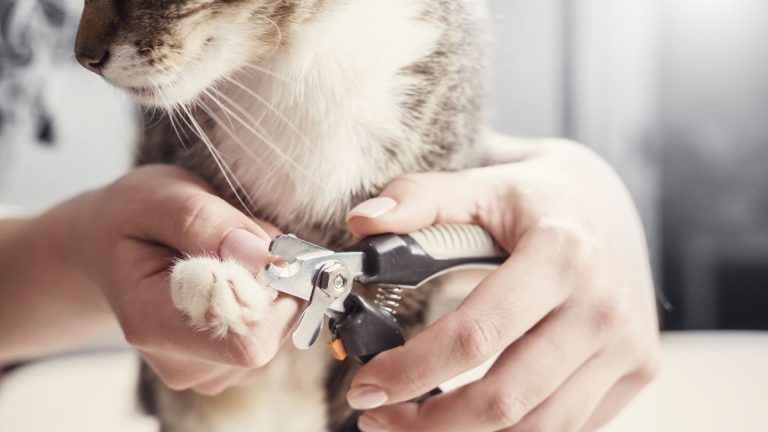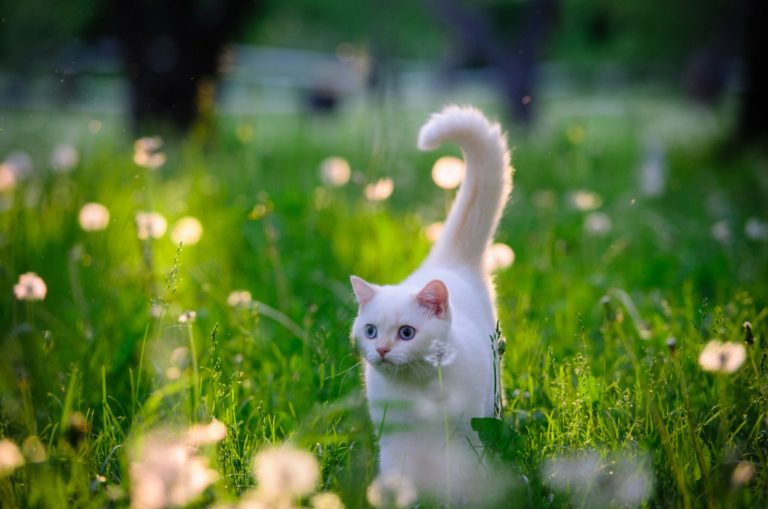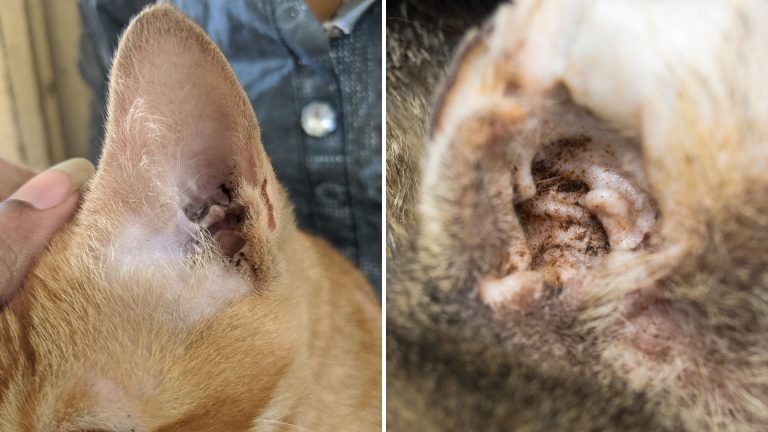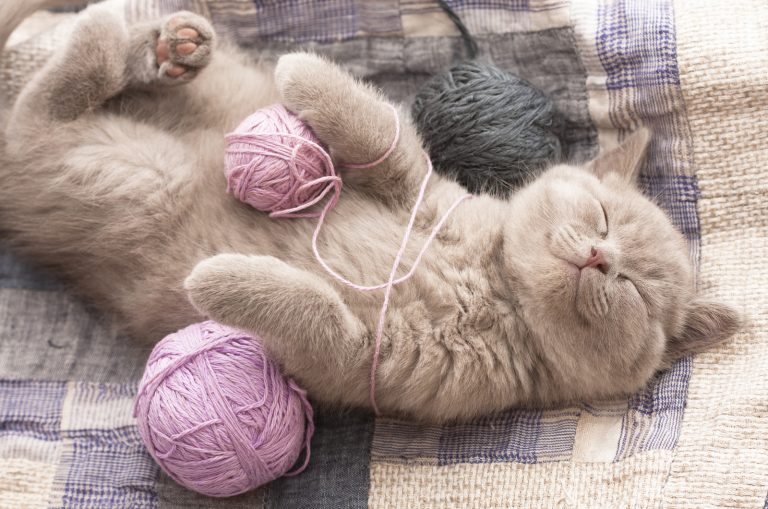Do Cat Hemorrhoids Exist? How Are They Treated?
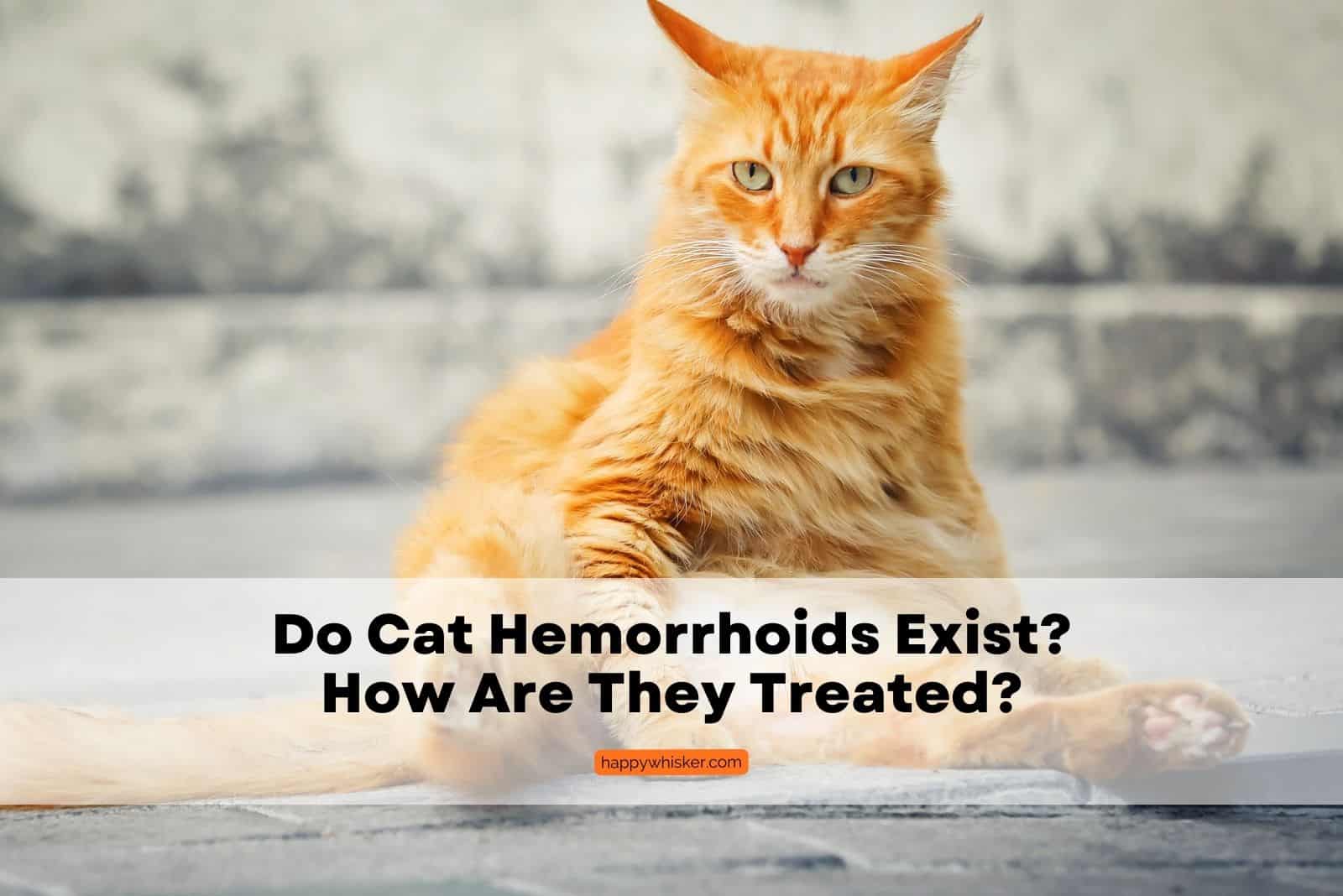
Hemorrhoids are a very… unpleasant health issue that affects humans, but luckily they can be treated.
While it is well known that humans can develop hemorrhoids, many people may wonder if cats can also suffer from this condition – is it possible for a cat to be diagnosed with cat hemorrhoids?
In this article, we will explore if “feline hemorrhoids” is a valid diagnosis, and how to help your cat get rid of the hemorrhoids-associated discomfort or even pain, so make sure to read on!
Let’s Clear It Up Right Away: Do “Cat Hemorrhoids” Exist?
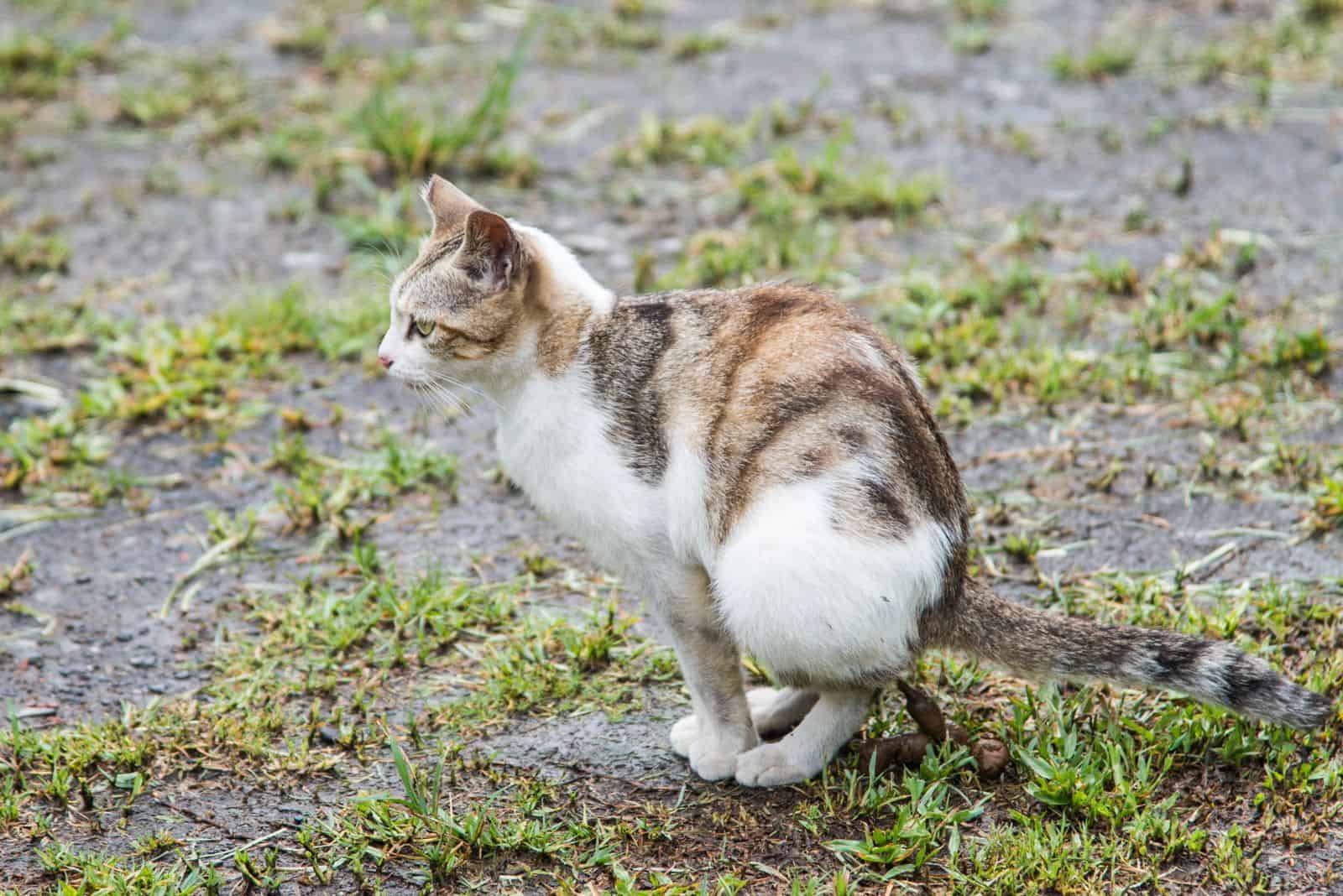
No, there is no such thing as cat hemorrhoids or feline hemorrhoids. Therefore, your cat cannot be diagnosed with hemorrhoids.
It is important to note that while cats cannot develop hemorrhoids, there may be other conditions that cause very similar symptoms, which causes people to believe that cat hemorrhoids exist (but don’t be mistaken – they do not).
So, which medical conditions have symptoms resembling the symptoms that humans with hemorrhoids experience? Those would be:
• Anal sac disease (impaction, infection, abscess, or neoplasia of the anal glands)
• Rectal or anal tear (tear in the lining of the anus or rectum)
• Rectal or anorectal stricture (a narrowing of the anal canal)
• Rectal prolapse (when rectum tissue slips outside the anal opening)
• Proctitis (inflammation of the anus and lining of the rectum)
• Inflammatory bowel disease (a group of conditions that cause inflammation in the digestive tract)
• Megacolon (a condition in which the large intestine becomes enlarged and loses its muscle tone)
• Constipation (difficulty passing stools)
• Neoplasia (the presence of a tumor in the anus or rectum)
• Anal sac cancer (cancer originating from the cat’s anal glands)
I will talk about each of these further on in this article.
Why Can’t Cats Be Diagnosed With Hemorrhoids?
Cats cannot be diagnosed with hemorrhoids because it is a condition that only affects humans.
Hemorrhoids are swollen veins in the anus or lower rectum. You might already know they can be internal, meaning inside the rectum, or external, meaning outside the anus.
In humans and cats, the anus is the external opening at the end of the digestive tract through which solid waste (aka poop) is expelled from the body.
However, even though their functions are essentially the same, their size, shape, and anatomy differ.
Additionally, cats do not have the same lifestyle and dietary habits that can lead to hemorrhoids, such as sitting on the toilet for long periods of time.
Therefore, cats cannot officially be diagnosed with hemorrhoids, as they’re a human-specific condition.
Symptoms That May Seem Like Cat Hemorrhoids
Above, I’ve mentioned feline health issues whose symptoms coincide with symptoms of hemorrhoids in humans. Now, let’s talk about what those symptoms are.
If you suspect your cat has some type of anal or rectal health issue, you might notice any of the following symptoms (or all of them):
• Blood in the stool
• Straining when defecating
• Difficulty defecating
• Swelling around the anus
• Swelling or protrusion in the anus or rectum
• Pain or discomfort when the anus or rectum is touched
• Cat licking the area
• Loss of appetite and lethargy
It is important to note that any of the above-mentioned health conditions can cause these symptoms, and not all of them may be present in every case.
Additionally, the specific symptoms may vary depending on the specific condition, which I will discuss next.
Let’s Talk More About Feline Health Issues Resembling Hemorrhoids
In this part of the article, we will go through each medical condition that causes hemorrhoid-like symptoms – what exactly they are, what causes them, and how they’re treated.
1. Anal Sac Disease

Before I explain what anal sac disease is, let me briefly explain what anal sacs are.
Anal sacs are small glands on either side of a cat’s anus. Their function is to produce a strong-smelling secretion that coats the feces during defecation.
The smell of that secretion is important for cats, as they use it to mark their territory and communicate with other cats.
However, anal sacs can sometimes become impacted, infected, or abscessed, which can cause a condition called anal sac disease.
• Anal sac impaction – occurs when the anal glands become filled with a thick, oily substance and are unable to empty properly.
• Anal sac infection – occurs when bacteria or other microorganisms invade the anal glands and cause inflammation.
• Anal sac abscess – occurs when the infection spreads to the surrounding tissue and forms a pocket of pus, and is very painful.
VCA Animal Hospitals states, “The first signs are scooting or dragging the anal area along the ground and licking or biting at the rectum or the tail.”
Anal sac disease is common in both male and female cats, no matter the breed or age, so I, as a vet, see a lot of cases of anal sac disease.
MSD Veterinary Manual mentions that in most cases, anal sac disease “…can be treated with manual expression and local instillation of antibiotic/steroid ointments.”
What does this mean? It means that anal sac disease is treated by gently pressing on the glands to empty them of their contents, which may be necessary if the anal glands are impacted or infected.
Antibiotics will kill the bacteria that caused the infection, while steroid ointment has anti-inflammatory properties and will help with swelling.
2. Rectal Or Anal Tear
Anal and rectal tears in cats occur when the lining of the rectum or the tissue surrounding the anal opening is damaged.
Potential causes of rectal or anal tears in cats are:
• Constipation
Straining to defecate can cause tears in the skin of the rectum or anus.
• Foreign objects lodged in the rectum or anus
Cats may swallow foreign objects that can cause tears in the rectum or anus when they try to pass them (in other words, poop them out).
• Anal gland impaction
When the anal glands become blocked, they can become enlarged and cause tears in the surrounding tissue.
These tears can cause discomfort and pain for cats and lead to complications such as infection and swelling, which tends to be quite uncomfortable (and painful) for the affected cat.
3. Rectal Or Anorectal Stricture
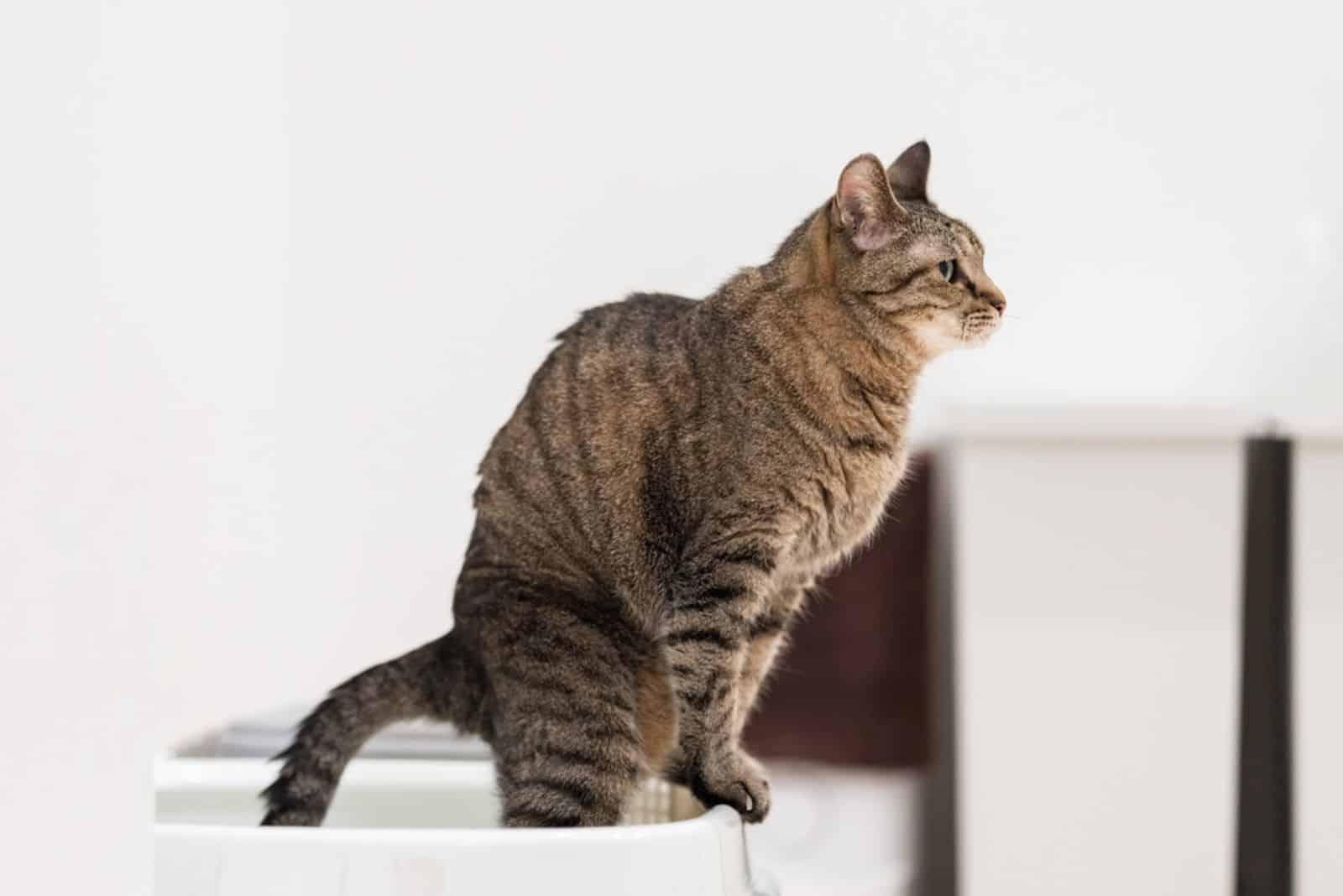
Anorectal stricture in cats is a narrowing of the lower part of the rectum and anus.
It is most commonly caused by a traumatic injury scar tissue (such as scar tissue that arose after a catfight injury of the anal area) or an obstruction of the rectal and/or anal area due to a foreign body or tumor. Infection or inflammation can also cause it.
Pet MD states that “cats that have had rectal or anal abscesses, inflammation, fistulas, a foreign body in the anal passage, or fungal infection are at a higher risk of sustaining the condition.”
The most common symptom of anorectal stricture in cats is difficulty passing stool, straining to defecate, passing small amounts of stool, or constipation.
4. Rectal Prolapse
Rectal prolapse is when the rectum, or the rectal tissue, protrudes through the anus.
The most common cause is the cat straining to defecate due to conditions such as diarrhea, constipation, or obstruction of the colon or rectum by a foreign object.
Incomplete rectal prolapse means the rectum only protrudes when the cat strains but then goes back inside afterward. Complete rectal prolapse means the cat’s rectum is constantly exposed outside the anus.
Pet MD emphasizes, “This is a serious and painful condition and should be treated as soon as it is noticed. “
One surgical option for treating rectal prolapse is colopexy, which involves attaching the prolapsed rectum to the abdominal wall to keep it in place.
A study published in Veterinary Surgery Journal reviewed the efficiency of Colopexy as a treatment for rectal prolapse in dogs and cats. Eight dogs and six cats were involved in the study.
After colopexy, rectal prolapse had not recurred in any of the 14 animals at the time of follow-up, meaning colopexy is an efficient choice for treating rectal prolapse in cats (and dogs).
5. Proctitis
Inflammation of the rectum and anus is known as proctitis.
Frequent bowel movements with little to no feces and extended straining after a bowel movement are signs of proctitis.
Additional symptoms of proctitis are bloody feces, excessive licking of the anus, and scooting on the floor.
It can be caused by various factors such as food allergies, infections, intestinal parasites, or a blockage in the intestines.
6. Inflammatory Bowel Disease (IBD)
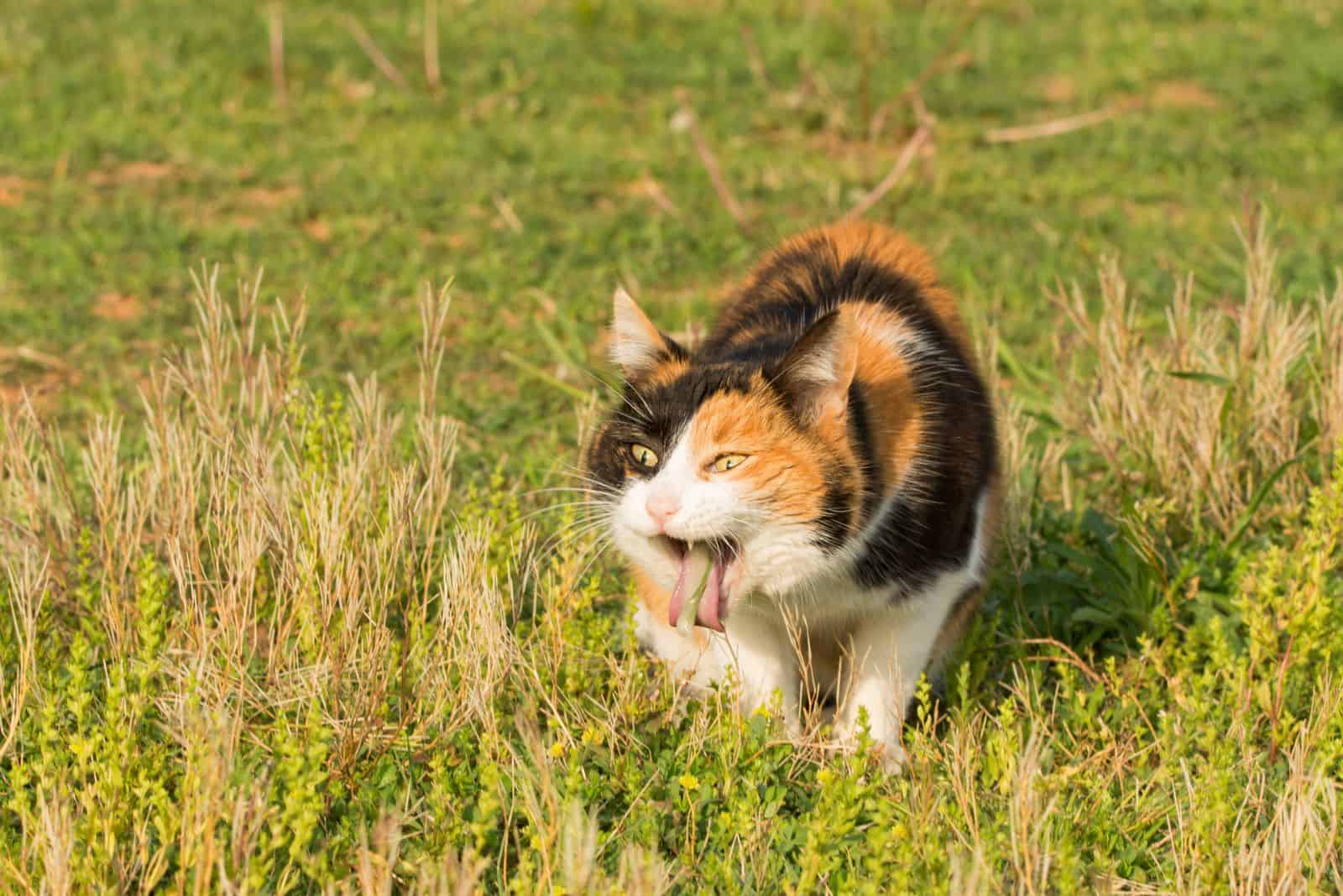
Inflammatory bowel disease (IBD) is a condition that occurs when the lining of the digestive tract becomes chronically inflamed and damaged.
Cornell Feline Health Center states that: “While the cause of IBD is unknown, current evidence suggests that it arises from a complex abnormal interaction between the immune system, diet, bacterial populations in the intestines, and other environmental factors.”
There are several types of IBD:
• Gastritis – chronic inflammation affecting the stomach.
• Enteritis – chronic inflammation affecting the small intestine.
• Colitis – chronic inflammation affecting the large intestine.
Vomiting, weight loss, diarrhea, bloody feces, lethargy, and decreased appetite are typical symptoms a cat experiences.
7. Megacolon
An extremely dilated, weak, ineffective colon is referred to as a megacolon.
When excrement is trapped in the colon in a bigger diameter than is possible to move through the cat’s pelvis, it typically results in obstruction and the inability to defecate.
In an article entitled Pathogenesis, Diagnosis, and Therapy of Feline Idiopathic Megacolon, the writers state, “Cats affected with idiopathic dilated megacolon have permanent loss of colonic structure and function.”
They also add that: “Affected cats are usually presented for reduced, absent, or painful defecation for a period of time ranging from days to weeks or months.”
Writers of Megacolon in Cats: The Role of Colectomy emphasize the importance of treating megacolon in cats, as feline euthanasia is the only option for cats with no surgical intervention for their medical issue.
8. Constipation
Constipation in cats is a common problem I come across quite often. Sometimes, all the cat needs is a stool softener, while other times, constipation is more severe.
Symptoms of constipation may include infrequent bowel movements, small or hard stools, and straining while using the litter box.
In severe cases, constipation can be accompanied by abdominal pain, vomiting, and loss of appetite.
A 2020 article published in the Journal of Feline Medicine and Surgery about the risk factors and treatment outcome predictors in constipated cats concluded that older, overweight cats, cats with chronic kidney disease, and those with a history of constipation were more likely to develop constipation.
Chronic constipation is often associated with megacolon (however, it is important to note that not all cats with chronic constipation will necessarily have megacolon).
Sometimes, cats suffering from severe forms of chronic constipation associated with megacolon may need surgery.
A study published in the Journal of the American Veterinary Medical Association regarding the treatment of those cats proved that surgery is an efficient treatment option for relieving constipation in most cats.
9. Neoplasia (Tumor)
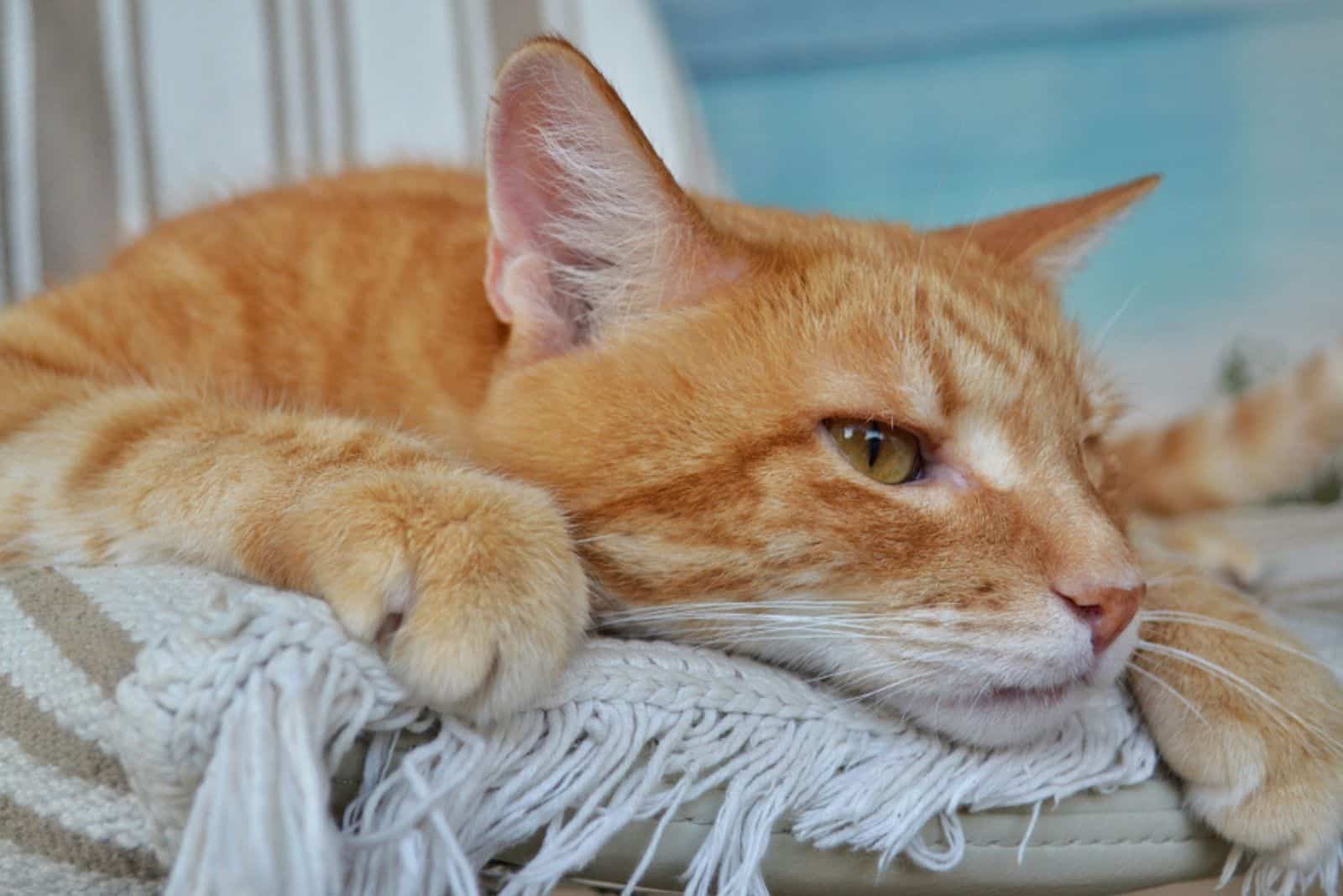
Neoplasia, or a tumor, is an abnormal growth of cells that can happen anywhere in the body.
One type of neoplasia that can occur in cats is polyps, which are benign tumors (not cancerous) that typically form in the cat’s anus or rectum.
A cat with anal polyps shows signs of discomfort when defecating or has blood in its stool.
Although the actual origin of anal polyps in cats is not entirely known, older cats and cats with certain underlying medical disorders, such as inflammatory bowel disease or allergies, are more likely to develop them.
10. Anal Sac Cancer
Anal sac cancer in cats is a form of cancer that affects a cat’s anal glands.
Symptoms can include bloody and mucus-covered stool, straining to defecate, constipation, rectal pain, weight loss, and/or a mass in the area.
A case report study about anal sac adenocarcinoma in one Siamese cat reports the cat’s symptoms were not defecating or eating, an enlarged anal sac, and a history of inappetence and lethargy.
It is typically seen in cats over the age of 10.
A 2022 article about the malignancy of neoplasms in dogs and cats confirms that older cats are more prone to developing cancer than younger cats. In fact, the article states that: “..the risk of malignant tumors increases by 20% every three years.”
Anus and rectal cancer are relatively rare in cats, but they can be serious if left untreated.
When Should I Take My Cat To The Vet?
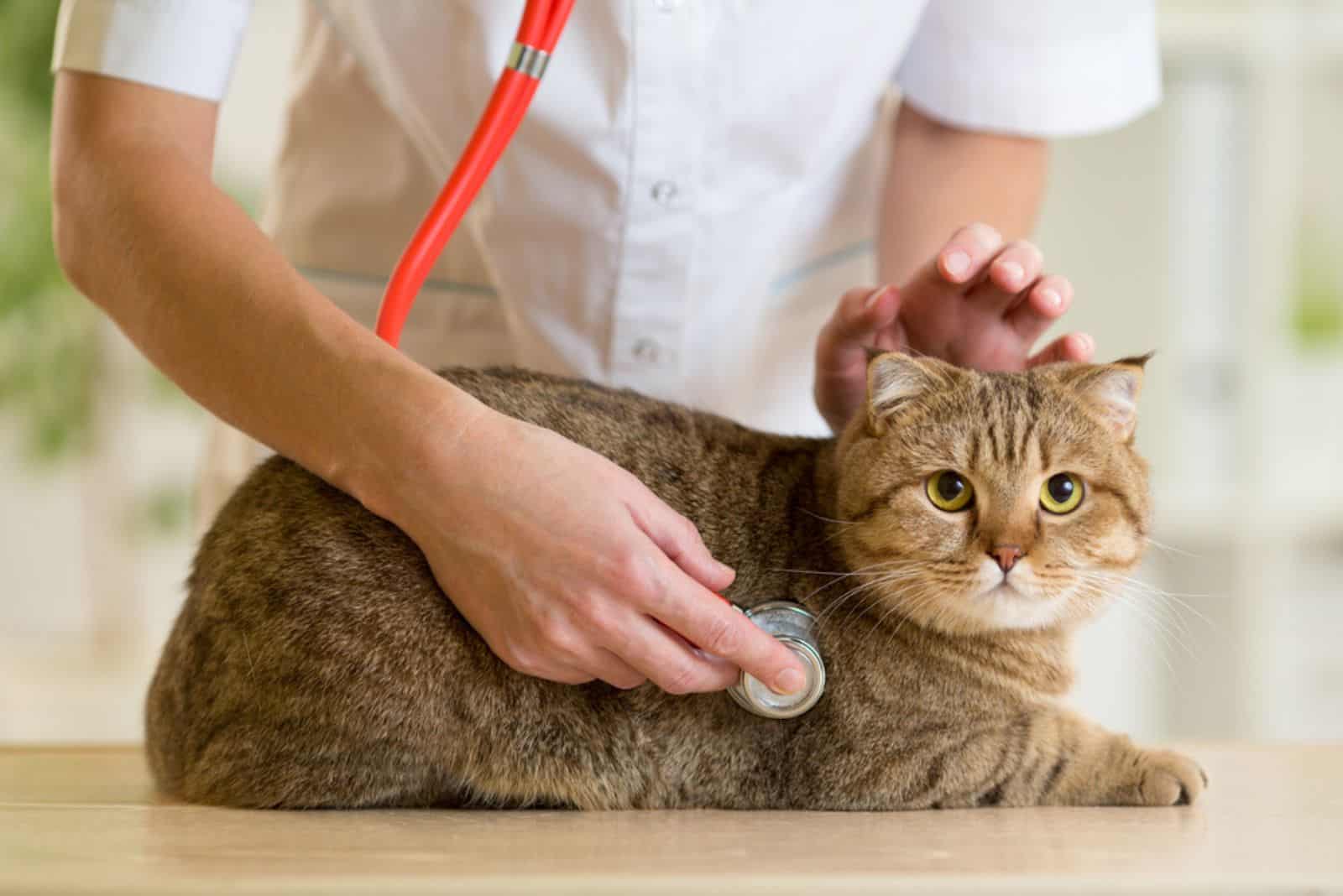
Cat owners, it’s important to be aware of any behavioral changes in your feline friend.
If your cat is passing a bloody stool, licking its anal area, or scooting, that’s usually a sign your cat is experiencing some type of anal/rectal issues (which I’ve discussed in detail in this article).
If your cat is experiencing anal and rectal problems, it’s important to have them examined by a veterinarian as soon as possible!
Symptoms of anal and rectal issues can range from mild discomfort to severe pain, but either way – a vet’s visit is needed. Anal and rectal health problems don’t just go away on their own, so proper treatment is always necessary.
What Can I Expect At The Vet’s?
If your cat is experiencing anal and rectal issues, the veterinarian will likely start by performing a physical examination, including a thorough examination of the cat’s anus and rectum.
That’s definitely something I would do, as it’s standard practice for cats coming in with these types of symptoms.
The vet will likely ask for a stool sample, as the cat’s poop can help the vet determine the underlying cause of your cat’s symptoms.
An ultrasound may also be performed, as it can help visualize the inside of the rectum and anus. This can prove beneficial in identifying tumors, foreign objects, or other issues in the examined area.
In some cases, vets ask for blood work and x-rays, which can help the vet establish a diagnosis.
What Are The Usual Treatment Options?
There are many different treatment options for cats with anal and rectal issues, but the most appropriate one depends on the specific condition causing your cat’s symptoms.
Treatment options may include medication, supplements, or a topical cream.
• Your veterinarian may prescribe medications to help relieve pain, inflammation, or discomfort.
• Topical cream or ointment can help relieve pain and reduce inflammation in the affected area.
• In some cases, changes to the cat’s diet (such as introducing dietary supplements) may be necessary to help improve bowel function.
• In severe cases, surgery may be necessary to remove an obstruction or repair damage to the anus or rectum.
However, I must emphasize, once again, that proper treatment relies heavily on whatever is causing the cat’s issues, which is something your vet will explain to you thoroughly!
In Conclusion
And there you have it – everything there is to know about why your cat’s experiencing hemorrhoids-like symptoms and what you should do about it.
Let me emphasize once more that cats cannot get hemorrhoids. Hemorrhoids are a type of vascular disorder affecting the anal area and are only found in humans!
I sincerely hope you found this article useful and that your feline improves as soon as possible!
Related Articles:
• Prolapsed Rectum Kitten: Causes, Symptoms And Treatment
• Why Is My Cat Leaving Blood Drops Behind? Explanation Below!
• Importance Of Cat Poop Color Chart – Understanding Felines


